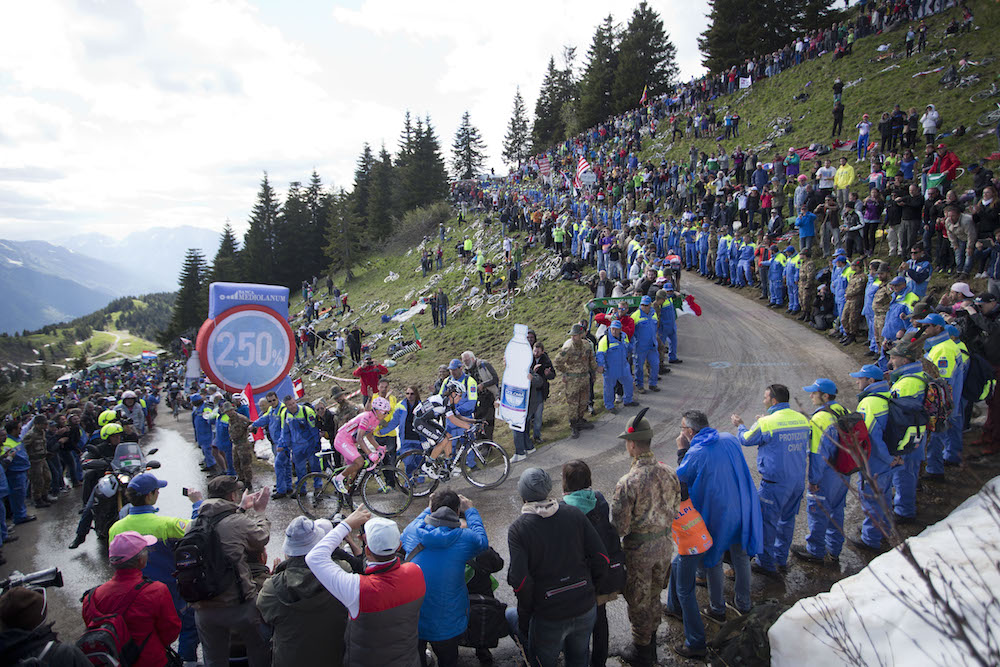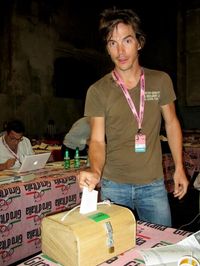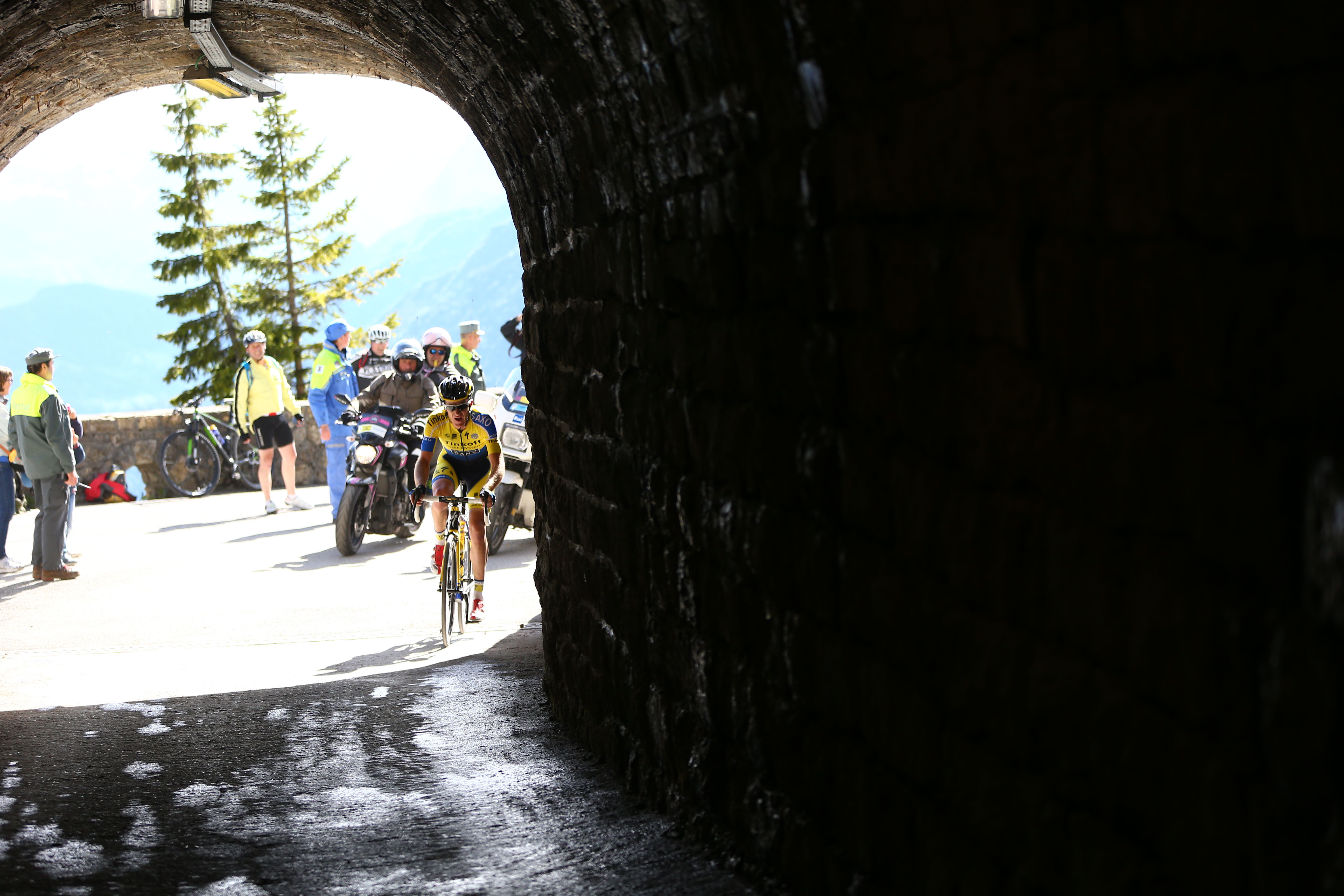'Brutal and relentless': The pain and the glory of Monte Zoncolan
Riders will take on the monstrous gradients of the Zoncolan on stage 14 of the 2018 Giro d'Italia

Nario Quintana and Rigoberto Uran on the Monte Zoncolan in 2014 (Sunada)

The "brutal and relentless" Monte Zoncolan climb is unlike any other in cycling given the fans and intensity, say insiders.
The 2018 Giro d'Italia climbs the 10.1-kilometre road tucked in Italy's northeast corner region Friuli-Venezia Giulia at the end of stage 14. Only five times has the Giro d'Italia raced it before, but it is already established itself in cycling.
"It's brutal. It's relentless," Matt White told Cycling Weekly. "It's so popular because people love seeing the pain that the riders are going through."
White, sports director at Mitchelton-Scott with race leader Simon Yates, raced the climb when it debuted in 2004. That was the only year the organiser went up the "easier" side, every year since – 2007, 2010, 2011 and 2014 – it has gone the hard way.

"I was at the back. I had so many pushes going up from the fans. I was suffering so much. I think that was also the first time I used a compact groupset. We were all afraid of it."
Sky's new sports director Matteo Tosatto raced it every year but in 2014.
The latest race content, interviews, features, reviews and expert buying guides, direct to your inbox!
"It's charming because fans like those true and hard climbs, then there's the atmosphere, when you get up there it looks like a natural football stadium filled with fans," he said.
"You suffer so much, you have to ride at your own rhythm. You can't do more than that because it never eases up and you'll need all energy at the top. Your legs will hurt, but also your arms because you are pulling on your bars.
"When you arrive there, you see that arch, 'Welcome to Hell.' At that point, you can only look at the wheel in front of you because if you look ahead, you'll lose your mind and want to climb off your bike."
From the base town of Ovaro to the top at 1,730 metres, the road averages 11.9 per cent. It often hits sections of 22 per cent and 20 per cent on the way up. The Giro d'Italia race book, the Garibaldi, uses colours to denote the different gradients with red being the highest. In this case, it appears as someone painted the whole road red in the book.
"I raced it when Michael Rogers won in 2014," Manuele Mori (UAE Team Emirates) explained. "It's a very hard climb, particular with the gradients that don't let up. Angliru has hard gradients, but it comes in stair steps. I've done all the climbs, but this is the hardest in Europe."
"If you are a GC guy, the gaps can be massive," Yates's team-mate Svein Tuft explained. "Even if the guy is right there in front of you, the gap can be a minute to him. It's a day where all the GC guys are going to pray for good legs."

"Everyone has to go at his own pace," small Italian climber Domenico Pozzovivo (Bahrain-Merida) added. "If you are on a super day, you can drop everyone, you win and you say it's beautiful, but for everyone else it's suffering. Every time I did it, I suffered."
Chris Froome (Team Sky) will mount a 34-tooth front ring and a 32-tooth in the rear. He trained on the climb in April to have an idea of what to expect.
"For the riders in our team, it's not a normal climb," Tosatto added. "The media says Zoncolan this or Zoncolan that. The riders ask and I say, it's like Mortirolo or Angliru to those who've not raced it.
"For me, it's the hardest climb in cycling. Bola del Mundo in the Vuelta a España is hard, but this goes on for nine kilometres. It's 40 minutes for the first riders, but for us mortals, it's one hour. One hour of going all out.
"Every climb one has it's own charm. Zoncolan, in the last kilometre of the tunnel when it's linked with the Italian soldiers lined the road - it's impressive."

Thank you for reading 20 articles this month* Join now for unlimited access
Enjoy your first month for just £1 / $1 / €1
*Read 5 free articles per month without a subscription

Join now for unlimited access
Try first month for just £1 / $1 / €1
Gregor Brown is an experienced cycling journalist, based in Florence, Italy. He has covered races all over the world for over a decade - following the Giro, Tour de France, and every major race since 2006. His love of cycling began with freestyle and BMX, before the 1998 Tour de France led him to a deep appreciation of the road racing season.
